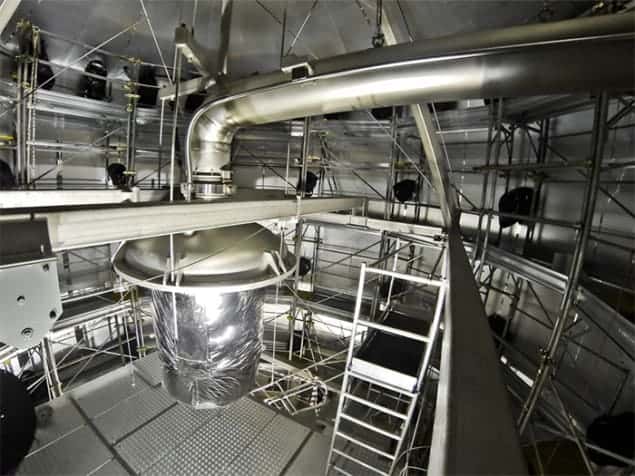
Earlier this week we received a curious embargoed press release from the XENON collaboration about a preprint that they have since posted to the arXiv server. The team has measured an excess of detection events in the XENON1T dark-matter detector, which ran for two years deep under a mountain at the Gran Sasso National Laboratory in Italy.
The team is very explicitly not claiming this to be the first-ever direct detection of dark matter, a mysterious substance that comprises most of mass in the universe. Instead, they are suggesting that the excess could be caused by axions from the Sun – hypothetical particles whose existence is not predicted by the Standard Model of particle physics.
Another suggestion made by the team is that the excess is caused by the unexpected detection of neutrinos. This could mean that our current understanding of neutrinos is deficient – they could have larger magnetic moments than currently predicted by the Standard Model, for example – which would also be interesting.
Tiny amount of tritium
A more mundane explanation is that the excess is related to the radioactive decay of an extremely tiny amount of tritium that managed to get into the detector, which comprises 2 ton of ultra-pure xenon.
But the physics is not why we thought the press release was curious. One thing is that the preprint has not yet been peer-reviewed by external experts prior to publication – although I have no doubt that this will be done in due course and a paper will be published. The second thing is that from a statistical point of view, the excess could very well be a fluctuation rather than a real thing. Normally a statistical significance of 5σ or greater is required to claim a discovery in particle physics, whereas values of 3.5σ or less are quoted for the axion, neutrino and tritium hypotheses.
As a result, we passed on rushing out a news story about this – so perhaps we missed the boat on all the excitement. And who knows, maybe a successor to XENON1T will discover solar axions.



